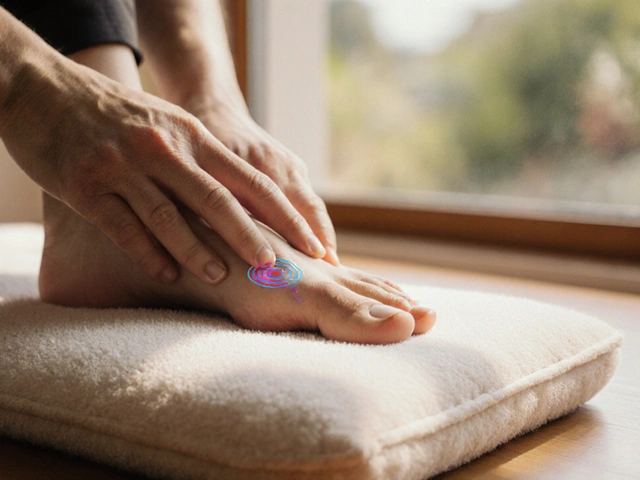Prenatal Massage: Safe Relief for Pregnancy Discomfort
Pregnancy changes your body fast. Prenatal massage can ease back pain, reduce swelling, and calm stress. This page tells you what prenatal massage actually does, when it’s safe, and simple tips to get the most from a session.
What it helps: common issues include lower back pain, hip and pelvic tension, leg cramps, headaches, and fluid retention. Massage improves circulation, relaxes tight muscles, and helps you sleep better. Many people also find it reduces anxiety and nausea by activating the parasympathetic nervous system.
Safety and timing
Always clear massage with your doctor, especially if you have high blood pressure, preeclampsia, bleeding, or a high-risk pregnancy. Most therapists avoid deep abdominal work and strong pressure over the belly. Side-lying positions with pillows are standard after the first trimester to keep you comfortable and safe. In the first trimester some providers are cautious; check with your care team if you’re worried.
What to expect in a session
A prenatal session usually lasts 30 to 60 minutes. The therapist will ask about your pregnancy, medical history, and current symptoms. Expect gentle, flowing strokes, lighter pressure on legs and ankles to manage swelling, and focused work on the low back and hips. Therapists trained in prenatal care know which areas to avoid and how to support your body with bolsters and pillows.
Finding the right therapist matters. Look for someone with prenatal certification or extra training in pregnancy massage. Ask about experience with common issues like sciatica or pelvic pain. If the therapist seems unsure, find someone else. You want confidence and clear answers.
At-home tips: use a pregnancy-safe oil like sweet almond or fractionated coconut oil to reduce friction. Avoid strong essential oils unless cleared by your provider. Use a pregnancy pillow or stacked cushions to sleep on your side. Gentle self-massage on the shoulders, calves, and lower back can help between appointments. For leg swelling, elevate your feet and do ankle circles several times a day.
Warning signs to stop a session: sharp pain, dizziness, unusual bleeding, contractions, or sudden shortness of breath. If any of these happen, tell the therapist and call your healthcare provider. Mild soreness after a massage can be normal, but intense pain is not.
Frequency depends on need. Weekly or biweekly sessions can help chronic pain or severe swelling. For mild discomfort, monthly check-ins may be enough. Always match frequency to how you feel and follow your doctor’s guidance.
Bottom line: prenatal massage is a practical tool for easing common pregnancy aches and worries when done safely. Ask questions, pick a trained therapist, and keep your healthcare team in the loop. With the right care, massage can make pregnancy more comfortable and help you rest better before baby arrives.
Insurance and costs: some insurers cover prenatal massage when prescribed for medical reasons; ask your provider and therapist about billing. If insurance doesn't cover it, many clinics offer sliding scales or package discounts to make care affordable. Bring questions and notes.

Prenatal Massage: Key Benefits for a Joyful and Vigorous Pregnancy
Prenatal massage is an effective way to ensure both maternal and fetal well-being during pregnancy. This article delves into the techniques, benefits, and tips for a safe and enjoyable pregnancy massage experience. Learn how this practice can alleviate common pregnancy discomforts, improve sleep, and enhance emotional well-being.

The Soothing Benefits of Prenatal Massage During Pregnancy
As the journey of pregnancy unfolds, many mothers-to-be experience physical and emotional changes that can be challenging. Prenatal massage offers a therapeutic approach to easing these discomforts. This article delves into the comforts and health benefits provided by prenatal massage, outlines when it is safe, and discusses techniques and positions to maximize relief. Practical tips for choosing a qualified therapist and integrating massage into pregnancy wellness routines are also covered.

Harness the Power of Prenatal Massage for Enhanced Maternal Health and Relaxation
Prenatal massage offers a multifaceted approach to enhancing maternal well-being, focusing on alleviating common discomforts of pregnancy and fostering emotional tranquility. This article delves into the intricacies of prenatal massage, the plethora of benefits it promises for expecting mothers, and practical tips for safely incorporating this therapeutic practice into pregnancy care. Readers will gain insights into how prenatal massage can ease physical discomforts, reduce stress, and foster a deep connection between mother and baby, all while ensuring safety precautions are duly observed.




